29
Mar
EPA Wants to Squelch State Authority to Adopt Pesticide Restrictions More Protective than the Fed
 (Beyond Pesticides, March 29, 2019)¬†The U.S. Environmental Protection Agency (EPA) made a low-key announcement on March 19 suggesting that it may change its handling of requests from states to exert stricter controls on use of pesticides than the federal agency sets out in its registration of the compounds ‚ÄĒ by disapproving them. This is potentially a big deal because it signals that the agency will be less-kindly disposed to states‚Äô desires to establish either somewhat different parameters of use based on local conditions and needs, or more-stringent regulations on pesticide use than those set out by federal regulators. This issue of preemption of localities‚Äô desires to protect their populations and environment has become an increasingly dynamic frontier at the nexus of pesticide use, health, and environment. Beyond Pesticides has written more frequently about this issue in recent years as the tension between centralized, federal regulation and more-local regulation has risen; see more below.
(Beyond Pesticides, March 29, 2019)¬†The U.S. Environmental Protection Agency (EPA) made a low-key announcement on March 19 suggesting that it may change its handling of requests from states to exert stricter controls on use of pesticides than the federal agency sets out in its registration of the compounds ‚ÄĒ by disapproving them. This is potentially a big deal because it signals that the agency will be less-kindly disposed to states‚Äô desires to establish either somewhat different parameters of use based on local conditions and needs, or more-stringent regulations on pesticide use than those set out by federal regulators. This issue of preemption of localities‚Äô desires to protect their populations and environment has become an increasingly dynamic frontier at the nexus of pesticide use, health, and environment. Beyond Pesticides has written more frequently about this issue in recent years as the tension between centralized, federal regulation and more-local regulation has risen; see more below.
EPA appears distressed by some of the approximately 300 annual requests it gets to make some adjustment to the federal regulation. This can happen under Section 24(c) of FIFRA, which allows for a Special Local Need Label, which can be requested under a variety of conditions, including when a ‚Äúfederally registered pesticide a) is not available in the state for the desired site(s) to adequately control the target pest(s), or b) cannot be applied without causing unacceptable risks to human health or the environment, or c) is necessary to maintain resistance management, or d) could be replaced by a formulation that poses less risk to man [sic] or the environment.‚ÄĚ
Some states assign some rulemaking authority over pesticide use to specific state entities, and use that authority to institute additional restrictions on pesticide use. But states do sometimes go to EPA for a 24(c) Special Local Need Label.
EPA seems to be signaling its disinclination toward those requests that seek to ‚Äúnarrow the federal label,‚ÄĚ i.e., set a standard or regulation more stringent than the federal registration process and labeling does (e.g., greater applicator training requirements, a foreshortened window during which use is allowed, or reducing the number of applications allowed by the federal label). EPA said it will not institute any changes for the 2019 growing season and will set a public comment period before changes are made, but noted it is ‚Äúre-evaluating its approach to reviewing . . . [such] requests and the circumstances under which it will exercise its authority to disapprove those requests.‚ÄĚ
This is the text of the EPA announcement: ‚ÄúThis is the time of year that EPA receives many special local needs registration requests from states under section 24(c) of FIFRA.¬†Section 24(c) states that “A State may provide registration for additional uses of federally registered pesticides formulated for distribution and use within the State to meet special local needs . . .”¬†EPA currently receives approximately 300 24(c) requests annually.¬†Many of these requests are for additional uses not considered by the federal label ‚Äď e.g., applying the pesticide to a different crop to address an outbreak of disease,¬†adding an alternative application method that suits the practices of that state, or adding a new pest species that is not on the federal label. However,¬†some requests are to narrow the federal label, such as to add a more restrictive cut-off date, to add training and certification requirements, or to restrict the use directions by limiting the number of treatments permitted by the federal label.
“Due to the fact that section 24(a) allows states to regulate the use of any federally registered pesticide, and the fact that some states have instead used 24(c) to implement cut-off dates (and/or impose other restrictions), EPA is now re-evaluating its approach to reviewing 24(c) requests and the circumstances under which it will exercise its authority to disapprove those requests. Before making any changes in this regard, EPA intends to take public comment on any potential new approaches before adopting them.
‚ÄúEPA is not making any immediate changes in this area and does not expect any potential changes will impact 24(c) requests that states submit ahead of the 2019 growing season.‚ÄĚ
The regulation of pesticide use is a multi-variate enterprise; what follows here is a brief primer: EPA is primarily responsible for regulation of pesticides (insecticides, herbicides, and fungicides) under FIFRA (the Federal Insecticide, Fungicide, and Rodenticide Act) and the Food Quality Protection Act (FQPA). The EPA looks at what potential human health and environmental impacts might be associated with use of a pesticide. It is supposed to do so by evaluating ‚ÄĒ on the basis of scientific studies that investigate the matter ‚ÄĒ whether compounds proposed for use may cause adverse effects on humans or the environment. It is charged with approving only those that cause ‚Äúno unreasonable adverse effects, taking into account the risks and benefits of pesticide use.‚ÄĚ (This, of course, begs the question: what are ‚Äúreasonable‚ÄĚ adverse effects?) In its evaluations, the agency also uses the National Research Council’s four-step process for human health risk assessment, which includes: (1) hazard identification, (2) dose-response assessment, (3) exposure assessment, and (4) risk characterization.
If a pesticide meets the ‚Äúno unreasonable adverse effects‚ÄĚ requirements, it can be ‚Äúregistered,‚ÄĚ which means approved, for use within prescribed limits and parameters. When registered, a pesticide acquires its ‚Äúfederal label,‚ÄĚ which sets out the requirements for, and limitations on, its use. In addition, pesticides are assigned a Toxicity Class, based on their acute toxicity; these include: Categories I (highly toxic and severely irritating), II (moderately toxic and moderately irritating), III (slightly toxic and slightly irritating), and IV (practically nontoxic and not an irritant). ‚ÄúSignal words‚ÄĚ must be used on the labels of categories I‚ÄďIII and are, respectively, ‚ÄúDanger,‚ÄĚ ‚ÄúWarning,‚ÄĚ and ‚ÄúCaution.‚ÄĚ Once registered, pesticides must be reviewed every 15 years to ensure that they continue to meet these requirements.
FIFRA was amended by the 1996 FQPA, which mandated a health-based standard for¬†pesticides¬†used on and in food; created protections for infants; expedited the approval process for pesticides deemed ‚Äúsafe‚ÄĚ; incentivized development of safer pesticides; and required that pesticide registrations remain current. In addition to the EPA, the¬†U.S. Department of Agriculture¬†(USDA) and the U.S.¬†Food and Drug Administration¬†(FDA) share some responsibility for regulation, though it all ultimately falls to EPA to investigate and approve or disapprove use. They help establish standards, or tolerances, for the allowable levels of pesticide residues on food crops and in animal feed. The FQPA requires that, when setting tolerances, EPA establish a safety finding, meaning that a pesticide can be used only when there is ‚Äúa reasonable certainty of no harm.‚ÄĚ
Federal regulation of pesticide use has increasingly been challenged by localities, whether states, counties, cities, or towns ‚ÄĒ often with the advocacy of community and nonprofit groups ‚ÄĒ seeking greater levels of protection for residents and/or the local environment. Localities will establish stricter regulations, and nearly inevitably, pre-emption ‚ÄĒ the ability of a ‚Äúhigher‚ÄĚ level of government to override laws of a lower level ‚ÄĒ becomes an issue. Pre-emption happens not only from the federal to state level; states often act to pre-empt county and municipal attempts to enact more-protective local regulation. Typically, a state, often spurred by complaints from trade associations or individual companies in the agrochemical industry, will litigate with the goal of state pre-emption of a local statute that seeks to rein in pesticide use in some way.
As Beyond Pesticides wrote in 2017 about an attempt by an Oregon county to ban aerial pesticide spraying: ‚ÄúThe case points to the legal conundrum that localities face in trying to protect their residents, lands, and resources from the assaults of pesticides, GMOs (genetically modified organisms), factory farms, fracking sites, or a host of other ills that communities may find objectionable because of health, safety, and/or environmental concerns. As communities . . . initiate efforts to establish regulations that may be more protective than prevailing state laws are, states and, very often, corporations persistently challenge those initiatives, arguing that state statutes supersede local authority to regulate. Such deference to state authority and statute is referred to as preemption ‚ÄĒ the use of state law to nullify the authority of a ‚Äúlower‚ÄĚ level of government, or a specific statute or ordinance, on that preemptive basis.‚ÄĚ
Other states and localities have also moved to establish more protective regulations, including Montgomery County, Maryland; Maine; and Connecticut. Localities also sometimes push back on state pre-emption action, as in the case of three communities in Illinois looking to have the state repeal its pre-emption statute. A recent study by the U.S. Department of Agriculture‚Äôs National Institute of Food and Agriculture, covered by Beyond Pesticides, found that ‚Äústate pesticide preemption laws ‚Äėcompromise public health and economic well-being‚Äô by preventing localities from enacting pesticide use restrictions on private property that are more restrictive than their state‚Äôs regulations.‚ÄĚ
POLITICO’s reporting notes that the greatest near-term impact of this signaled change in EPA’s responses to 24(c) requests might be the significant state regulation of dicamba, the Monsanto/BASF herbicide product that was formulated and marketed to deal with weeds that have developed resistance to the glyphosate-based Roundup. Dicamba, which is commonly used on soybean crops through the Midwest and South, has been the subject of great concern for the damage it causes to crops from drift, as well as for its health and environmental impacts.
A number of states, including Indiana, Minnesota, Missouri, South Dakota, North Dakota, Illinois, and Arkansas, have instituted restrictions on its use that surpass those accompanying the federal registration of the compound. Texas, Iowa, Georgia, Kentucky, Alabama, and North Carolina are all eyeing 24(c) requests for tighter application windows, additional training requirements, better record keeping, new fine structures for violations, and other modifications of the federal label. Arkansas banned dicamba use entirely in early 2018; that ban was upheld in the face of Monsanto’s lawsuit challenging it. Then, in November 2018, EPA stepped in to rule that the herbicide could be used in the state for two years, superseding the state ban. Such experiences with EPA around use of dicamba may be a harbinger of what is to come.
As reported by POLITICO, Rose Kachadoorian, president of the Association of American Pesticide Control Officials, said EPA is touting a remedy for a problem that doesn‚Äôt exist, adding that the system in place works fine, and that such a change would limit states‚Äô rights. She notes, ‚ÄúA lot of these states want to ensure the continued availability of a technology. By having the ability to have increased training, cut-off dates and other restrictions, it‚Äôs actually enabling states to use that technology.‚ÄĚ
Beyond Pesticides emphatically advocates for the ability of communities to protect themselves by adopting protective regulations, as well as nontoxic approaches to pest management of all kinds. For context and history on pre-emption in the U.S., see this 2013 Beyond Pesticides factsheet, which says, ‚ÄúState preemption laws effectively deny local residents and decision makers their democratic right to better protection when a community decides that minimum standards set by state and federal law are insufficient. Given this restriction, local jurisdictions nationwide have passed ordinances that restrict pesticide use on the towns public property, or school districts have limited pesticides on its land.‚ÄĚ
From Beyond Pesticides‚Äô March 14, 2019 Daily News Blog: ‚ÄúBeyond Pesticides looks toward a future when federal, state, and local governments are all accountable to the people they serve; when pesticide use across the board is recognized as unacceptably hazardous; when agrochemicals are rendered unnecessary due to the regeneration of healthy soils and resurgence of beneficial insect and microbial communities brought about by the widespread adoption of organic practices; when health is a right, and not a choice for some. As a step toward that endpoint, localities must be able to build the models we need to follow nationally and globally to ensure our future on this planet.‚ÄĚ
Stay current on these issues through the Beyond Pesticides Daily News Blog, check out advocacy activity in any state, and join Beyond Pesticides in pushing for the local authority to create more-robust protections from pesticide use.
All unattributed positions and opinions in this piece are those of Beyond Pesticides.
Source: https://www.politico.com/story/2019/03/26/epa-pesticide-rules-1292061









 (Beyond Pesticides, March 28, 2019) A set of documents obtained by the Center for Biological Diversity reveals that the Trump administration has known for over a year ‚Äď and actively concealed ‚Äď that the organophosphate insecticide chlorpyrifos jeopardizes the existence of 1,399 endangered species. Top officials at the U.S. Department of the Interior, including Acting Secretary David Bernhardt, were privy to and prevented the release of a ‚Äúbiological opinion,‚ÄĚ completed by the Fish and Wildlife Service (FWS) in 2017, which contains a full analysis of the extensive environmental impacts wrought by three organophosphate insecticides.
(Beyond Pesticides, March 28, 2019) A set of documents obtained by the Center for Biological Diversity reveals that the Trump administration has known for over a year ‚Äď and actively concealed ‚Äď that the organophosphate insecticide chlorpyrifos jeopardizes the existence of 1,399 endangered species. Top officials at the U.S. Department of the Interior, including Acting Secretary David Bernhardt, were privy to and prevented the release of a ‚Äúbiological opinion,‚ÄĚ completed by the Fish and Wildlife Service (FWS) in 2017, which contains a full analysis of the extensive environmental impacts wrought by three organophosphate insecticides. (Beyond Pesticides, March 27, 2019) Exposure to commonly used pesticides in the womb and during the first year of life is linked to a higher risk of developing autism, according to the study, ‚ÄúPrenatal and infant exposure to ambient pesticides and autism spectrum disorder in children: population based case-control study,‚ÄĚ
(Beyond Pesticides, March 27, 2019) Exposure to commonly used pesticides in the womb and during the first year of life is linked to a higher risk of developing autism, according to the study, ‚ÄúPrenatal and infant exposure to ambient pesticides and autism spectrum disorder in children: population based case-control study,‚ÄĚ  (Beyond Pesticides, March 26, 2019)¬†In
(Beyond Pesticides, March 26, 2019)¬†In  (Beyond Pesticides, March 25, 2019)¬†EPA is using a regulatory loophole ‚Äď the ‚Äútreated articles exemption‚ÄĚ ‚Äď to allow systemic insecticides to be used in mass quantities, without regulating or labeling them as required under the Federal Insecticide, Fungicide and Rodenticide Act (FIFRA). EPA does not currently assess adverse effects on the environment and public health caused by widespread use of neonicotinoid insecticides delivered through seeds coated with the insecticides, resulting in widespread exposure to one of the most environmentally damaging classes of chemicals on the market.
(Beyond Pesticides, March 25, 2019)¬†EPA is using a regulatory loophole ‚Äď the ‚Äútreated articles exemption‚ÄĚ ‚Äď to allow systemic insecticides to be used in mass quantities, without regulating or labeling them as required under the Federal Insecticide, Fungicide and Rodenticide Act (FIFRA). EPA does not currently assess adverse effects on the environment and public health caused by widespread use of neonicotinoid insecticides delivered through seeds coated with the insecticides, resulting in widespread exposure to one of the most environmentally damaging classes of chemicals on the market. (Beyond Pesticides, March 22, 2019) A
(Beyond Pesticides, March 22, 2019) A  (Beyond Pesticides, March 21, 2019) Corporate food giant General Mills has thrown some weight behind regenerative agriculture, committing to converting one million acres of farmland to regenerative practices by 2030. Some – but not all – of the initiative involves organic land management.
(Beyond Pesticides, March 21, 2019) Corporate food giant General Mills has thrown some weight behind regenerative agriculture, committing to converting one million acres of farmland to regenerative practices by 2030. Some Рbut not all Рof the initiative involves organic land management.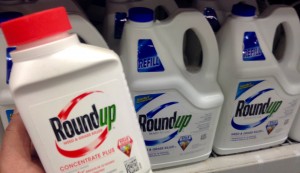 (Beyond Pesticides, March 20, 2019) In a second verdict against Bayer/Monsanto yesterday, a jury found unanimously that a California man’s non Hodgkin lymphoma (NHL) was substantially caused by the herbicide glyphosate (Roundup). The case being heard in federal court in San Francisco now moves to the damages phase. Last August in
(Beyond Pesticides, March 20, 2019) In a second verdict against Bayer/Monsanto yesterday, a jury found unanimously that a California man’s non Hodgkin lymphoma (NHL) was substantially caused by the herbicide glyphosate (Roundup). The case being heard in federal court in San Francisco now moves to the damages phase. Last August in 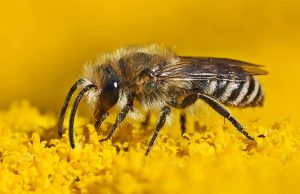 (Beyond Pesticides, March 19, 2019) Research is beginning to explain how systemic neonicotinoid insecticides affect often overlooked species of ground nesting bees. While much of the current scientific literature has focused on the impacts of pesticides to bumblebees and honey bees, a study, 
(Beyond Pesticides, March 19, 2019) Research is beginning to explain how systemic neonicotinoid insecticides affect often overlooked species of ground nesting bees. While much of the current scientific literature has focused on the impacts of pesticides to bumblebees and honey bees, a study, 
 (Beyond Pesticides, March 14, 2019) A
(Beyond Pesticides, March 14, 2019) A 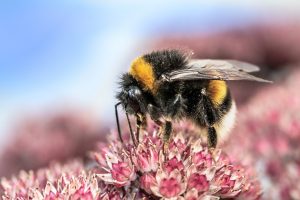 (Beyond Pesticides, March 13, 2019) A study on the impact of two neonicotinoid pesticides shows differential gene expression in bumblebees (Bombus terrestris) after exposure. Considering the current
(Beyond Pesticides, March 13, 2019) A study on the impact of two neonicotinoid pesticides shows differential gene expression in bumblebees (Bombus terrestris) after exposure. Considering the current  (Beyond Pesticides, March 12, 2019) Fifty years after the end of the Vietnam War, the Agent Orange byproduct dioxin continues to contaminate Vietnam’s soils and wildlife, and subsequently affect human health. In 
(Beyond Pesticides, March 12, 2019) Fifty years after the end of the Vietnam War, the Agent Orange byproduct dioxin continues to contaminate Vietnam’s soils and wildlife, and subsequently affect human health. In  (Beyond Pesticides, March 11, 2019)  We must stop the expanded commercialization of genetically engineered pesticides. The failure of the U.S. Environmental Protection Agency (EPA) to fully evaluate environmental impacts of gene-manipulating pesticides raises serious concerns in light of the agency’s ongoing failure to predict ecological effects of pesticides, such as the dramatic decline of pollinators.
(Beyond Pesticides, March 11, 2019)  We must stop the expanded commercialization of genetically engineered pesticides. The failure of the U.S. Environmental Protection Agency (EPA) to fully evaluate environmental impacts of gene-manipulating pesticides raises serious concerns in light of the agency’s ongoing failure to predict ecological effects of pesticides, such as the dramatic decline of pollinators.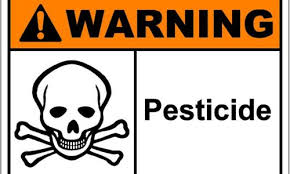 (Beyond Pesticides, March 8, 2019) Researchers from the U.S. and Switzerland have
(Beyond Pesticides, March 8, 2019) Researchers from the U.S. and Switzerland have  (Beyond Pesticides, March 7, 2019) A
(Beyond Pesticides, March 7, 2019) A  (Beyond Pesticides, March 6, 2019) After a brief hiatus, Florida Fish and Wildlife Conservation Commission (FWC) is continuing use of aquatic herbicides, including glyphosate, for invasive species management. Public pressure and feedback caused FWC to take a
(Beyond Pesticides, March 6, 2019) After a brief hiatus, Florida Fish and Wildlife Conservation Commission (FWC) is continuing use of aquatic herbicides, including glyphosate, for invasive species management. Public pressure and feedback caused FWC to take a  (Beyond Pesticides, March 5, 2019) Wild, edible plants subject to drift from the herbicide glyphosate during forestry operations can be contaminated with the chemical an entire year after an initial application, according to a
(Beyond Pesticides, March 5, 2019) Wild, edible plants subject to drift from the herbicide glyphosate during forestry operations can be contaminated with the chemical an entire year after an initial application, according to a  (Beyond Pesticides, March 4, 2019) Last week, U.S. Representative Earl Blumenauer (D-OR) reintroduced the
(Beyond Pesticides, March 4, 2019) Last week, U.S. Representative Earl Blumenauer (D-OR) reintroduced the 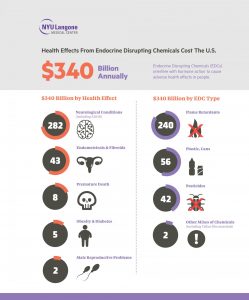 (Beyond Pesticides, March 1, 2019) The costs of pesticide use extend far beyond the invoices farmers pay for purchase of the chemicals to use on their crops. The real costs related to pesticide use and exposure include those of health care, lost productivity and income, and environmental damage (loss of environmental services and biodiversity; compromised air, water, and soil quality). There has been relatively little research focused on those real and extensive costs; this
(Beyond Pesticides, March 1, 2019) The costs of pesticide use extend far beyond the invoices farmers pay for purchase of the chemicals to use on their crops. The real costs related to pesticide use and exposure include those of health care, lost productivity and income, and environmental damage (loss of environmental services and biodiversity; compromised air, water, and soil quality). There has been relatively little research focused on those real and extensive costs; this  (Beyond Pesticides, February 27, 2019) U.S. PIRG tested 20 common beers and wines and found glyphosate residues in all but one. Glyphosate, the active ingredient in Roundup, is the most commonly used agrichemical in the world. Though it is linked to many health and environmental issues, there is no current EPA limit for glyphosate residues in beer or wine. The U.S. Department of Agriculture (USDA) does not regularly test for glyphosate on either food or beverages.
(Beyond Pesticides, February 27, 2019) U.S. PIRG tested 20 common beers and wines and found glyphosate residues in all but one. Glyphosate, the active ingredient in Roundup, is the most commonly used agrichemical in the world. Though it is linked to many health and environmental issues, there is no current EPA limit for glyphosate residues in beer or wine. The U.S. Department of Agriculture (USDA) does not regularly test for glyphosate on either food or beverages.
